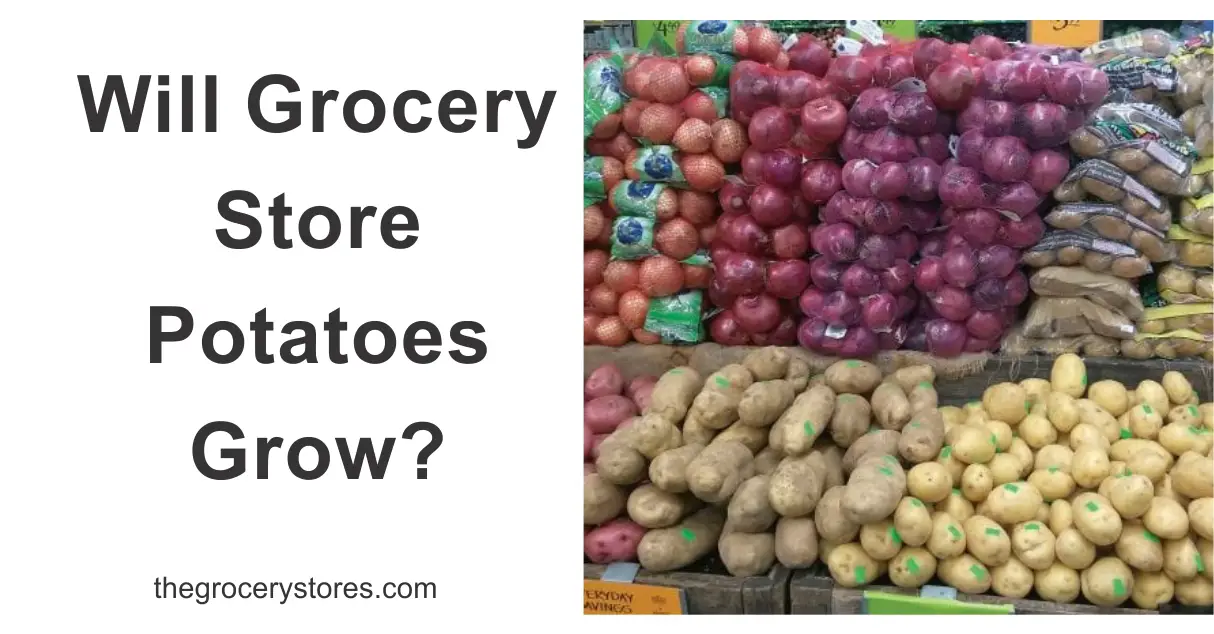During our daily agricultural activities, particularly when dealing with tuber planting, we noticed that our already stored plants (yams, potatoes, cocoa yams, and so on) have sprouted and are ready to be planted. These sprouts mark the beginning of what will grow to be a large harvest within a period of time, mostly likely in months.
Whereas you can find and purchase a larger selection of seeds for your potato planting season from a nursery or from a catalog, it doesn’t leave out those potatoes we purchase from the store, as they are still somewhat fertile and can sprout when kept for a period of time.
Though we might have a lower yield, and they are also very prone to plant health issues, which we have to watch out for. A gardener and an expert recommend that potatoes from the nursery should be used during the planting season instead of those purchased from the grocery store.
The reason for this is that potatoes from the nursery have higher yields than potatoes from the store and are less prone to health problems than potatoes from the store.
Can you use store-bought potatoes to grow potatoes ?
At the grocery store, potatoes are neatly showcased, and their attractiveness tends to make you want to buy them. Their clean and attractive appearance makes it a little difficult to grow them.
So, can you use store-bought potatoes to grow potatoes? Of course you can, but then there is more risk management as they are often treated with sprout inhibitors and herbicides.
Despite their attractiveness on the shelves, these potatoes are not recommended for planting because they take longer to sprout and, thus, stunted growth is unavoidable. Even when you try to wash off this clophroham (herbicide/inhibitor), it may not work, and even if it does, your plant risks other diseases.
Can you use store-bought potatoes for seed?
Regular potatoes or potatoes bought from the store are not the same as seed potatoes. Regular or store-bought potatoes are mainly for immediate consumption and not for replanting, although they may also, in some cases, be considered for planting as healthy potato plants may be gotten from them.
Seed potatoes are specifically grown for growing new potato plants. They are certified to be free of disease, so you have little or no worry pertaining to the health of the plant.
Also, seed potato plants are not treated with cloproham. This means that there are no herbicides or sprout inhibitors to stunt the growth of the seed potato plant.
Can You Plant Store-Bought Potatoes That Are Sprouting?
If you notice that your regular or store-bought potatoes are starting to sprout, you should do well to plant them. Not only are these spuds readily available, but your wait time before sprouting is drastically reduced.
This case is totally different from that of certified seed potatoes, for which you have to undergo processes and also need to wait for their delivery.
However, growing potatoes from store-bought potatoes has no real advantages (those soft, sprouting grocery store potatoes will make good compost).
Seed potatoes cost no more than regular potatoes.
What is the difference between seed potatoes and regular potatoes?
Potatoes are propagated asexually or vegetatively, with the exception of plant breeders. Potatoes of the same variety are usually genetically identical to their parents.
Due to this fact, the seed you use to plant potatoes well resembles a potato. However, there are several differences between seed potatoes and regular/grocery store potatoes.
This distinctive difference is stated as follows:
Regular or grocery store potatoes are frequently treated with a sprout inhibitor to prevent sprouting of the potato eyes while in storage or on the shelf. This case is different to the seed potatoes as none of this is done to them.
Another distinctive difference is that seed potatoes are certified disease free. Seed potatoes that are to be sold are usually tested for a series of diseases before they are certified disease free.
Any seed found to be affected by disease is not certified and is not sold. This helps the farmer so as not to introduce disease to his crops. Regular potatoes do not go through this certification process.
Grocery potatoes are readily available, unlike seed potatoes, which you have to certify and still wait for.
How do you regrow store-bought potatoes?
In many people’s diets, potatoes are a mainstay, which makes them a source of humor for us. We are made aware of the upcoming gardening season as the leaves begin to emerge.
Additionally, because conventional potatoes are readily available, you could be curious to learn how to grow them again and guarantee a yield due to the addition of cloproham, which causes you to question their ability to produce.
To regrow your store-bought potatoes in the garden, remember that storing your potatoes at a higher temperature may cause them to sprout more quickly.
Depending on the storage method, potato type, and storage temperature, the average length of the dormancy phase is 2 to 3 months. CIPC, ETHYLENE, CARVONE, and MALEIC HYDRAZIDE are some of the inhibitors that are employed.
Use organic potatoes because they haven’t been treated, at the very least.
Can you plant normal potatoes?
Potatoes can be grown in the ground or in containers, but containers are preferred because harvesting is much easier and they can be grown all year, especially in tropical zones.
Normal or regular potatoes can be grown, but try as much as possible to choose organically grown potatoes that are disease free. But you can actually grow a healthy store-bought potato even with a good harvest too.
This is not always possible because regular or store-bought potatoes are treated with herbicides and inhibitors, which stunt their growth.
Can any potato be a seed potato?
Regular potatoes are usually found at the grocery store as they are made available for eating on a commercial scale and showcased, in which most times sprout inhibitors are used so that the potatoes don’t grow.
On the contrary, seed potatoes may frequently be purchased online or at garden supply stores or nurseries, and come with a certified label for growth. When choosing your seed potatoes, your major aim is to get a very good yield and harvest, so you cannot risk getting seeds that are not certified healthy and disease-free.
And because regular potatoes have been treated with sprout inhibitors to prevent growth during transport, they are not the best for seeds and should not be considered. You should therefore go for a certified healthy and disease-free potato seed.
Can I use old potatoes to grow new ones?
Potato planting is usually not as tedious as other tuber crops, as your new potatoes can be easily grown from an already sprouted potato in your storage or garden.
This process is not perfect, but it can be used, especially if not planted on a commercial scale.
Old potatoes that have been in store for a long time tend to deteriorate and sprout, making them not really edible but for growing a new potato plant that yields the best for consumption or can also be used for another planting, hence continuing a circle of potato availability.
How do you get potatoes to sprout eyes?
Potatoes can be grown from potatoes themselves, thus an infinite circle of bounty is created. One of the technicalities that potato farmers encounter is getting the potatoes to sprout.
In potatoes, sprouts are a warning sign of impending deterioration. The “eyes” of potatoes, which are just little bumps or indentations where the tuber shoots and sprouts new plants, are where sprouts develop.
In order to make your potato sprout, the first step is the selection of the certified potato seed plant you want to use for your planting season, although regular potatoes can also be used. Getting your potatoes to sprout is a three-step process.
First, first rinse your potatoes. I’m cold water. This method is for your regular potatoes as many are sprayed with growth inhibitors to prevent them from sprouting during storage, so you’ll want to try to rinse them off. As a bonus, the moisture may be enough to trigger sprouting.
Secondly, place the potato in a box or container in a cool, dark place for a couple of weeks. It’s at this time that the potato’s eyes emerge or become more visible. Note that a single potato plant can have many eyes, so you don’t need to chit a bunch of potatoes to get enough potato plants.
Lastly, when the potato eyes sprout, pull them out into the light and plant them.

